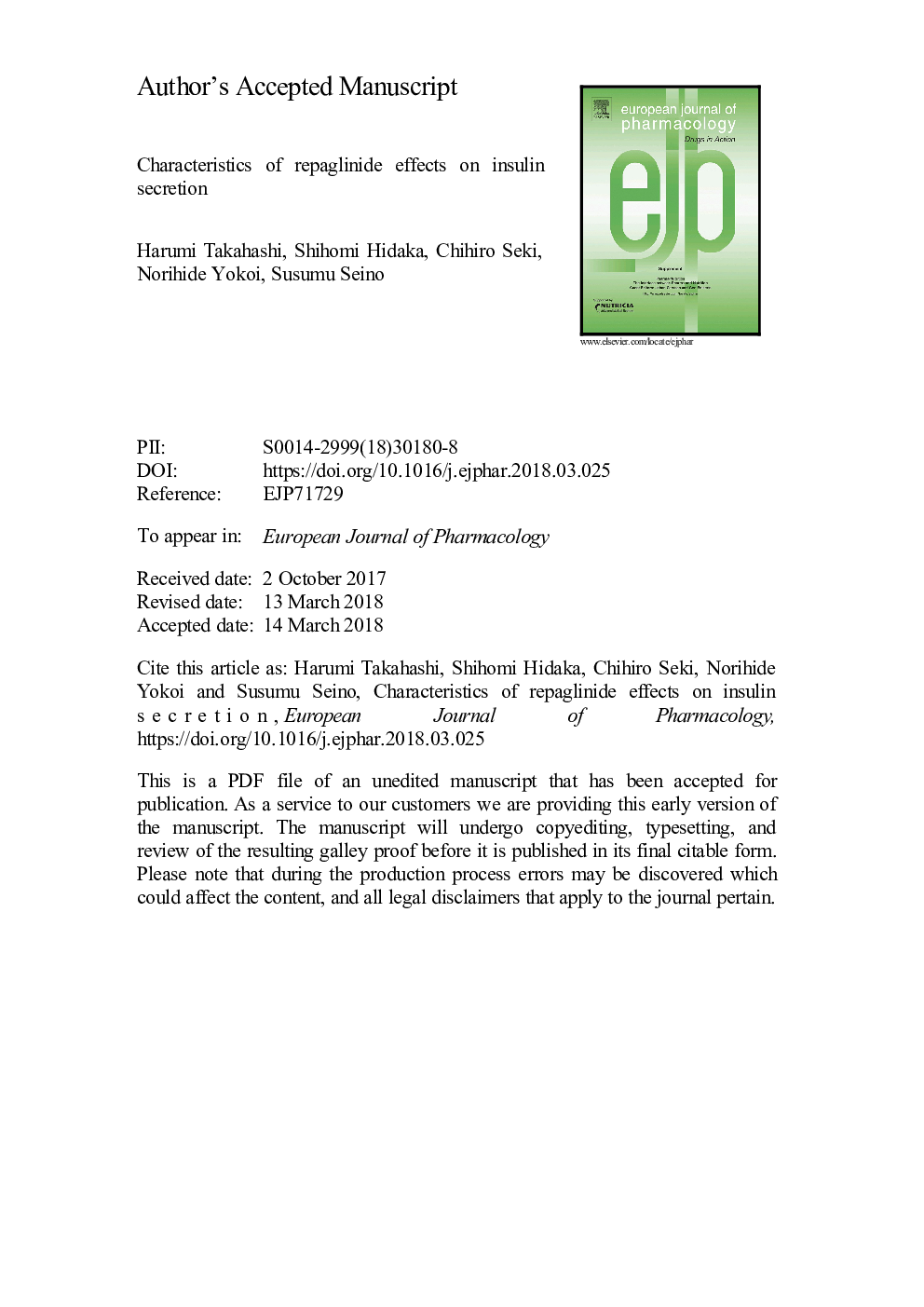| Article ID | Journal | Published Year | Pages | File Type |
|---|---|---|---|---|
| 8529109 | European Journal of Pharmacology | 2018 | 29 Pages |
Abstract
The dynamics of insulin secretion stimulated by repaglinide, a glinide, and the combinatorial effects of repaglinide and incretin were investigated. At 4.4â¯mM glucose, repaglinide induced insulin secretion with a gradually increasing first phase, showing different dynamics from that induced by glimepiride, a sulfonylurea. In the presence of glucagon-like peptide-1 (GLP-1), insulin secretion by repaglinide was augmented significantly but to lesser extent and showed different dynamics from that by glimepiride. At 4.4â¯mM glucose, the intracellular Ca2+ level was gradually increased by repaglinide alone or repaglinide plus GLP-1, which differs from the Ca2+ dynamics by glimepiride alone or glimepiride plus GLP-1, suggesting that the difference in Ca2+ dynamics contributes to the difference in the dynamics of insulin secretion. At a higher concentration (8.8â¯mM) of glucose, the dynamics of insulin secretion stimulated by repaglinide was similar to that by glimepiride. Combination of repaglinide and GLP-1 significantly augmented insulin secretion, the amount of which was comparable to that by the combination of glimepiride and GLP-1. The Ca2+ dynamics was similar for repaglinide and glimepiride at 8.8â¯mM glucose. Our data indicate that repaglinide has characteristic properties in its effects on the dynamics of insulin secretion and intracellular Ca2+ and that the combination of repaglinide and GLP-1 stimulates insulin secretion more effectively than the combination of glimepiride and GLP-1 at a high concentration of glucose, providing a basis for its use in clinical settings.
Related Topics
Life Sciences
Neuroscience
Cellular and Molecular Neuroscience
Authors
Harumi Takahashi, Shihomi Hidaka, Chihiro Seki, Norihide Yokoi, Susumu Seino,
